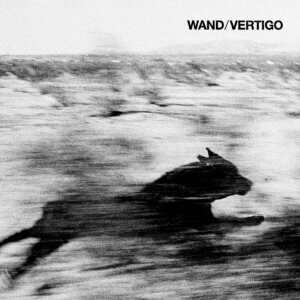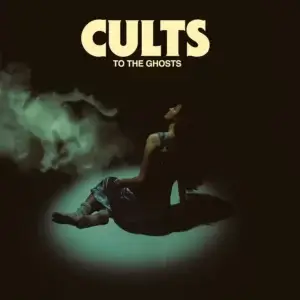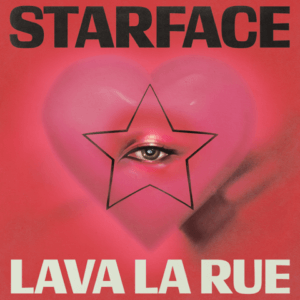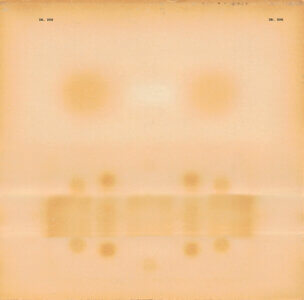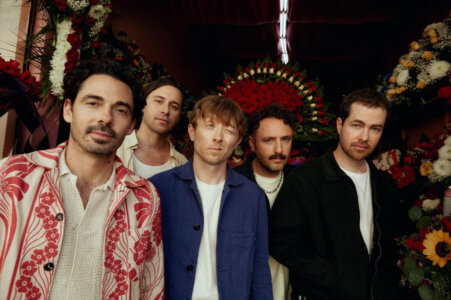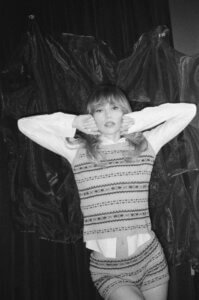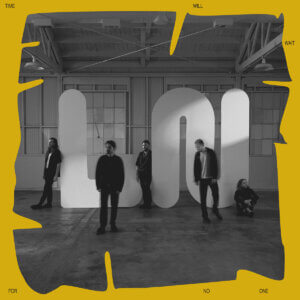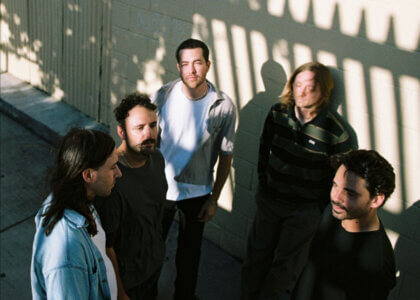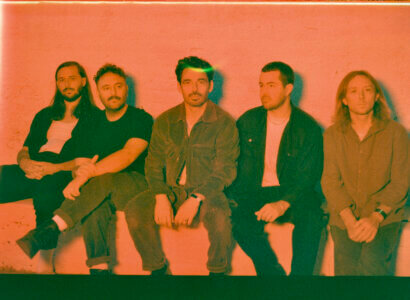Local Natives: Someday is Now
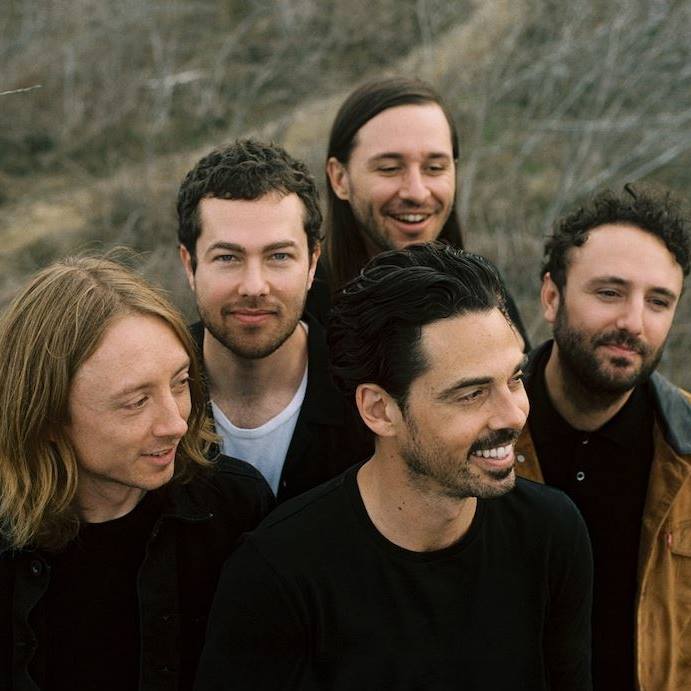
After nearly 15 years, four albums and a long-sealed reputation as indie darlings, most bands might not necessarily feel the need to challenge themselves, but Local Natives aren’t most bands.
The L.A. five-piece’s fourth album Violet Street is a cohesive and jaunty addition to their catalogue, making for a sound Pitchfork described as being “more personal and timeless” than its predecessor, 2016’s comparatively modern-sounding Sunlit Youth. The LP explores themes of anxiety with regards to life and love (vocalist/guitarist Taylor Rice got married a year ago), and has been rolled out with lead single “When Am I Gonna Lose You?”, which features a music video starring actress Kate Mara.
Even for a career that has seen them consistently release solid albums for the past decade, the band remain keen to push personal boundaries both musically and in terms of their creative approach, working entirely with renowned producer Shawn Everett (Alabama Shakes, Vampire Weekend, Weezer, the War on Drugs) on the new album, whom they’d previously only spent a couple weeks working with while making their previous LP. Hot on the heels of their North American tour in promotion of the record, Rice spoke to Northern Transmissions on the phone ahead of the band’s first of two nights in Seattle, and discussed the making of the album, working with Everett, and several of the late night adventures they had in the process.
Northern Transmissions: What do you make of how people are receiving the new album so far in general, not just based on the first show of the tour last night in Vancouver?
Taylor Rice: I think it is still unfolding. I think this is an album that I’ve just been totally excited to share with our fans and with people. We really had the best time making it with Shawn Everett, who’s the producer. I think there’s so much in this album – [it’s] the first time that we have a shorter album. We worked really hard to edit ourselves and cut things down, and I think it is the first time we’ve been able to do that, and have this really cohesive thing. I’ve just been so excited for people to hear it. It is too early even for me to be able to know [how people are receiving it], but you start to see people say “Oh, I love ‘Someday Now,’” in the middle of the record. It’s kind of chill and it’s got this Marvin Gaye vibe. A lot of people are talking about that one. “Shy” is one of my favourite songs. It has this super insane freakout in the song, and I’m so excited to play that live. People are also talking about that song. It’s just fun. I know these songs
so well, and you get to watch as people discover them, which is fun to watch.
NT: What’s the biggest way in which you guys challenged yourselves while making this record, in comparison to your 2016 album Sunlit Youth?
TR: The biggest way we challenged ourselves was to really trust in each other and being a band in the studio. What I mean by that is that every previous Local Natives album has been very meticulously crafted. It’s something that we would do over the course of a year. We would really meticulously craft the songs, and then go into the studio and make them. With this album, we wanted to try something different, and it was to say, “This is our fourth record as a band. We’ve been playing together for over 10 years – some of us for 16 years – and we know each other so well. Let’s capture the spirit of what it’s like for us to play off of each other live, in that very genuine, band-in-a-room, five-musicians-feeling-each-other way.” That was really scary. Normally you go into a studio, and for us, we want to know what we’re doing. This was a bit of a leap for us to do that, and it was just the most amazing experience. I really have to give credit to our producer Shawn Everett, who made every single day this insane rollercoaster of an adventure of “Okay, we have an idea for a song – how are we going to get there?” It would take so many twists and turns that we didn’t see. We had to have a lot of faith in that process to make this record.
NT: You worked with Shawn Everett for a couple weeks for your previous album. This time, he was behind the production, mixing and engineering of this album. What was the dynamic like now that you had a lot more time to spend working with him?
TR: We just went all in. We just pushed all our chips in on Shawn. I’m so glad we did, it was really amazing. I really feel like he’s a genius. The dynamic was just so great. Shawn has a way of approaching music, of the whole production. There are no problems in the studio, there are only a thousand answers. A lot of times when you’re working on a song, it does feel like a puzzle. “What do we do with this? How do we finish it? What’s the arc of this song? What’s the identity of it?” The process was really cool. We would use things like a painting. It would be like, “Here’s this photograph of this abandoned mall that has vines and trees growing in it – that’s the touchpoint for this song.” Or there would be a [Federico] Fellini film on silent in the background. Just using really different things to help guide the process that would just open you up and be really outside the box. I could talk forever about all the things we did with Shawn… Maybe I’ll just mention one, which, to me, embodied the most what it was like to work with him. He has this microphone that’s shaped like a human head, that’s ultra high-fidelity. It has these two microphones in its ears. It’s so that you can record whatever noise you want, and then you hear it as if you were actually hearing it in a room. He puts this microphone up in the room, and we were all just making this swirling noise until we all were like, “Okay, we’re going to run around it, and scream and bang on drums to make this crazy cacophony sound.” It was 1 a.m., we’re delirious, and we kind of got carried away. We were just going crazy, and then ended up all laughing hysterically in this pile on the floor. We went in and turned that noise into the first background chord that’s on “Vogue,” the first song on the album. It’s the most beautiful sound on the record – this floating, really pretty chord. It was so unexpected. We turned the most cacophonous moment in the studio together into this very gorgeous, beautiful opening for the album. We kept having that type of experience, where unexpected things like that would happen and flip a song on its head.
NT: You’ve said that you’ve “never had so much fun” making a record as you did with Shawn, and that some days were a “wild, unexpected adventure” until 3 am. Was that one of those adventures?
TR: Totally, yes. He’s also a bit of a madman. He really works so much – [his] schedule is pretty crazy. We would go until 3 a.m. all the time, and that was one [story.] There are all kinds of experiments: there’s his tape machine, and we were looping this tape through the middle of the room. We were performing the song on this mixing board – all these things that are kind of impossible to explain. We would barely know how it was working, and then it would all click. It would be like, “Oh, this is how [Talking Heads] made ‘Once in a Lifetime.’” We’re using this production technique, but then doing this very modern thing on top of it. It was so fun. It was hard, too, but it really was such a creative, really fun space. It reminded me of our first record, Gorilla Manor; this time where we all were living in this house together, and we were writing together, making music, and everybody was on top of each other. It was a really effusive, created, bottled energy. It felt like that, in a way.
NT: What’s an example of other 3 a.m. adventures you had with him?
TR: He has this huge warehouse, and we were all set up in the room. We could just play off each other and improvise. We had this song, and we were like, “Okay, we’re just going to jam it.” There’s this app called Radiooooo; this app has a map of the world, and you choose a decade. You click on a country and a decade, so you can go, “Brazil, 1970s,” and it’ll play music that was on the radio in the ‘70s in Brazil. It could be Czech Republic or Russia in the ‘80s – literally any country, any decade – and it [shows you] all this really dope music. We had our song and we chose with Shawn five decades and countries at random. We would listen to whatever song it was for 30 seconds, and then play our song in that style. It would be like, “‘80s, Turkey,” and it would be some weird vibe, like “Okay, cool, everybody play our song in that vibe.” We would jam on that for five minutes and then we’d keep repeating. We’d be like, “Okay, Sweden, 1960s,” and then “Okay, whoa, let’s jam in this vibe.” We had all of this jamming on this song, but in these really crazy styles. We just went in and helped create this song out of it. That was definitely an idea I’d never thought of before, of a way to put a song together.
NT: You’ve said that you guys found inspiration in movies and visual art (ie. paintings) to inform the record’s sound, and you even edited a song to match a film. What films/filmmakers or paintings/painters in particular acted as influences for the album?
TR: There really were a lot – I should probably just write a comprehensive list. We were in there for months and months. I mentioned the photograph of this dead mall, and that was for “Tap Dancer”. That was really a beacon for that song. We kept turning back to this one photograph that we had as the touchstone for it. But often, we’d just be working on a song and we’d choose a movie for that day. Sometimes it wasn’t like, “This song has to be Citizen Kane.” It was like, “Okay, today Citizen Kane is on. Maybe it seeps in subconsciously, or if we hit a point in the day where we’re stuck a little bit, we just let Citizen Kane tell us where to go.” Shawn also had this IFC [Films service where] you could also pick a country and decade for films. It was so cool – all these films and epic filmmakers from the ‘60s and ‘70s. We’d watch weird shit like El Topo
or Citizen Kane or There Will Be Blood… There were a couple that made their way into the landscape of the album.
NT: You made the record at an L.A. warehouse, and the big city vibe of Los Angeles is another thing that seems to be a major influence on this record – you even named the song “Megaton Mile” about an L.A. car wash. What is it about L.A. that breeds inspiration for you, versus if you made an album somewhere in the boonies?
TR: For Sunlit Youth, we made that record all over the world. We went to Thailand, Nicaragua – we’d do all these trips outside of the city. It felt really important to be in L.A. properly to make this record. I think it was important in a lot of ways. This dark, ‘70s Fleetwood Mac vibe, that was something we kept thinking about, and wanted to be a guiding light for the record. For us, this city has been home for so long, and it’s a creative hub. The music that we were making, and where we wanted to come from, felt correct to be in Los Angeles. We didn’t want to go into the wilderness or get away, we wanted to be in the city itself. I think throughout all the songs, and even the lyrics, L.A. is definitely a character that informs the album.
NT: You’ve described this album as being the most exciting record you’ve ever made, and that it reminds you of what it was like to make music when you guys first got together. What is it about the album’s sound – or any other aspect of it – that reminds you the most of the beginning of Local Natives?
TR: I would say that has more to do with the creative energy, and the feeling that anything was possible in playing off of each other. I think it was the level of trust that we had together to dive in to something and rely on each other, and lean on each other. We’ve been playing music together a really long time. Especially with Shawn as the producer for this record, and just allowing any idea that we had. He had so many incredible ideas of things I never could have thought of. But if I have an idea, he’s so capable at so quickly making it happen. He was so fun to work with as an engineer. We’d just be like, “Okay, we want to set up two drum kits, and we want the rest of us to be jamming to them in this particular manner.” It felt really free in terms of
how we were collaborating with each other.
Words by Dave MacIntyre
Latest Reviews
Tracks
Advertisement
Looking for something new to listen to?
Sign up to our all-new newsletter for top-notch reviews, news, videos and playlists.
